Not every synthesizer is a winner. Sometimes, despite the manufacturer’s best intentions, a synth just doesn’t click with the buying public.
There are any number of reasons for this. Synthesis styles can change seemingly overnight. R&D is a long process, and an instrument designed to take over the world may find that the world has moved on in the meantime. Other instruments may sound great but are too niche to really catch fire. Or, the company is forced to go out of business, dooming an otherwise great product to die a premature death.
Let’s take a look at synthesizers from the shoulda woulda coulda file—instruments that, under different circumstances, could have become the classics they were intended to be. Synths that—like the proverbial fish—got away.
In 1998, everyone wanted analog modeling or PCM sound synthesis. There were a few oddballs in there as well, like physical modeling, but most hardware offered either digital recreations of analog synthesis, or ultra-realism in the form of samples. FM was decidedly old hat.

And yet into this market, Yamaha released the FS1R. The silver 1U rackmount instrument had an advanced form of FM synthesis with eight operators and a number of different waveforms, including Sine, All1, All2, Odd1, Odd2, Res1, Res2, and Formant. Yes, formant.
Along with FM, the FS1R could also do formant synthesis and was capable of the usual vowel sounds associated with it but also physical modeling. It sounds absolutely incredible, and the onboard effects only add to the beauty of the sounds it can produce.
Unfortunately, 1998 was really not the best year to release a new FM synth—even one that sounded this good. This, combined with its relatively complex architecture, ensured it went out of production after only a year or so. It has since gone on to become a kind of lost classic, with high prices to match. It is, no doubt, a unique synth.
In the 1970s, the two biggest synthesizer manufacturers in the United States (and possibly the world) were Moog and ARP. And yet by the end of the decade, Moog would have lost its founder, Robert Moog, and ARP would be on its way to bankruptcy. So what happened? The Moog story is better left for another day, but ARP’s troubles are often attributed to the Avatar.
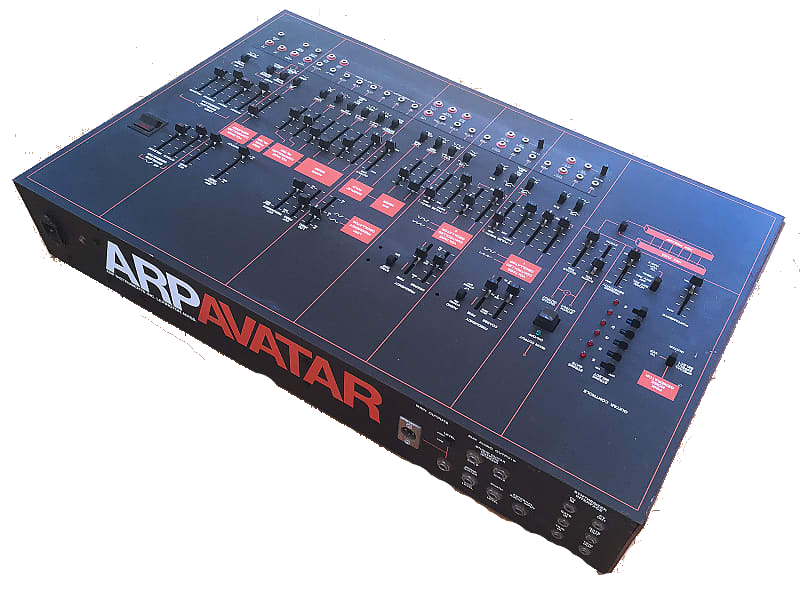
Released in 1977, the Avatar was ARP’s guitar synthesizer—a hybrid instrument that they hoped would revolutionize the music industry. Who wouldn’t want to play an Odyssey MKIII with their guitar? Almost $4 million was spent on research and development and initial production, yet only a handful of Avatars were ever sold. What went wrong?
The Avatar’s guitar interface was not foolproof. It relied on a hexaphonic pickup to change incoming notes into square waves that could be used to trigger notes. However, there was a significant delay when playing lower notes. It's also monophonic and required a very clean picking style to work properly.
Despite some interesting and unique features (like the hexaphonic fuzz circuit), and positive word-of-mouth generated by a great demonstration at NAMM, guitarists just couldn’t be convinced to drop $3,000 on one. With only about 300 made, the Avatar has become a collector’s item, with most people using it as a normal synthesizer via CV/gate control rather than as it was intended.
In the late 1980s, the word on every producer’s lips was "sampling." Sequential Circuits was one of the first companies to make sampling affordable with its 12-bit Prophet 2000 keyboard and 2002 rackmount version. Praised for their sound quality, they put high-quality sampling within reach of project studios.
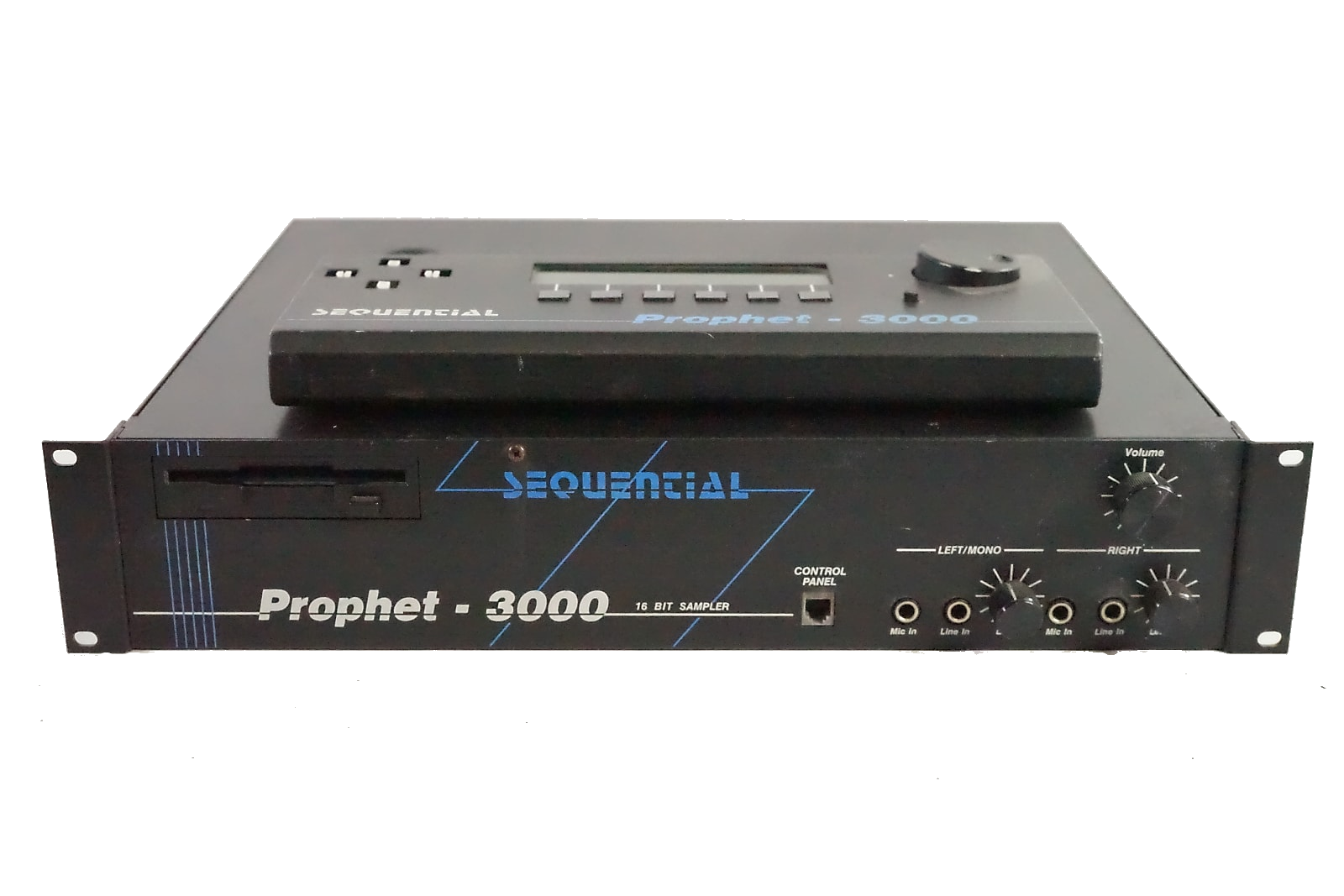
In 1987, Sequential were poised to do the same with 16-bit sampling, this time with the Prophet 3000. It had sampling rates up to 48kHz, expandable memory up to eight megabytes, auto pitch-mapping and looping, and more. There was an analog filter for warming up samples and even a detachable faceplate, something Akai would borrow a few years later for its S6000 sampler. In their cover story review, Sound On Sound magazine said, "The Prophet 3000 may well be so far ahead of the competition that they never catch up."
Despite a favorable launch and hints of expandability and a larger, digital product line to come, only about 250 units of the Prophet 3000 were produced. What happened? Sequential Circuits were forced to go out of business. Dave Smith blames "an ill-fated decision to move into computer audio and sound in 1985–86. We were too small and under-capitalized, and we were a few years too early in the market. It drained our resources, so by the time we pulled back to professional instruments (Prophet 2000 sampler, the VS, and the Studio 440), it was too late."
Sequential Circuits was bought by Yamaha, and Dave Smith and his team moved over to the Japanese company. Rumor has it that the Japanese-only Yamaha A7000 sampler released not long after was based on the Prophet 3000, although the A7000 is also rare.
The American company Ensoniq entered the market in 1985 with its Mirage sampler. It was one of the first truly affordable sampling keyboards and, despite its low bit rate, it was a hit and helped put them on the map. Over the next decade or so, the company released a staggering number of forward-thinking samplers and digital synthesizers, and yet the Fizmo—its crowning achievement—failed to make much of a mark at the time.
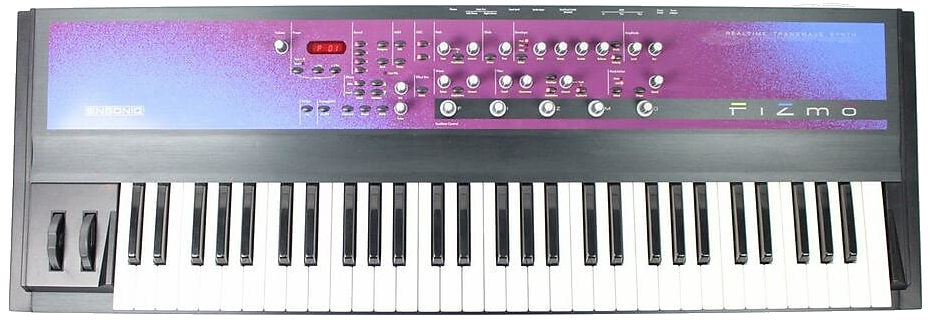
The Fizmo employed what Ensoniq called Transwave synthesis, wavetables of layered sound data. These harmonic layers progressed naturally and could modulate over time. It had an utterly unique (if not terribly warm) sound. With eight simultaneous oscillators across four presets, eight LFOs, resonant and non-resonant multimode filters, plus 41 digital effects, this was a serious machine. Additionally, every programming function had its own knob or button, making it very hands on.
With all of this going for it, the Fizmo only shipped about 2,000 units. As with the Yamaha FS1R (above), the market had moved on. People wanted the Roland JP-8000 and analog modeling. Those units that did sell were hampered by bad power supplies and an unfortunate reliance on a third-party computer program for editing some parameters. Thanks to its unique sound palette, the Fizmo is now revered for the unique instrument it is.
In 1981, Wolfgang Palm and his company PPG released the Wave, a revolutionary digital synthesizer that used wavetables to store single-cycle sampled waveforms. Despite its high price tag, it was immensely popular, and the technology developed for it is still in use in hardware and software synths today.
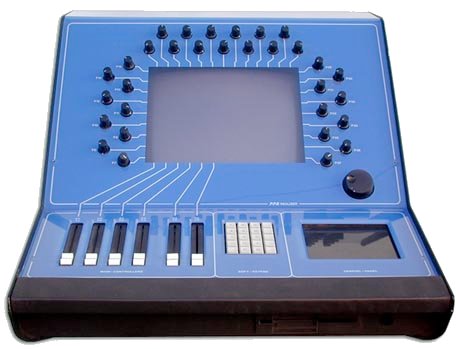
Five years later, Palm hoped that his latest creation, the Realizer, would again capture the cutting edge of digital music synthesis. Alas, it proved to be too far ahead of its time. About 10 years, it turns out, which is how long it took for Steinberg to debut the VST format.
The Realizer was essentially a proprietary music production computer. Bearing the same distinctive blue and white color scheme of the Wave instruments, and looking like a terminal from a 1980s sci-fi movie, it was capable of producing, emulating, processing, recording, sequencing, and mixing sound, all digitally. It featured analog modeling (it could apparently do a Minimoog), FM, wavetable, and sampling, with the modeled instrument appearing on the screen and its parameters controlled by the knobs that surrounded it.
PPG dissolved in 1987 due in part to the outlay necessary for R&D, and the Realizer (slated to retail at a whopping $65,000) never saw the light of day. Two prototypes were apparently made, however, with one selling for $50,000 in 2012.
"Too weird to live, too rare to die." Hunter S. Thompson was talking about his lawyer, Dr. Gonzo, but he may as well have been referencing the Crumar Spirit, a bonkers monosynth released by the Italian instrument company in 1983 and designed by Bob Moog, Jim Scott, and Thom Rhea, all of Moog Music.
At first glance, the Spirit looks like any number of other monophonic synthesizers released in the pre-MIDI days. With its black face and wood panels, it even looks vaguely Minimoog-ish. And while at first glance it may appear similar, it is much, much more complicated than Moog’s more famous synth.
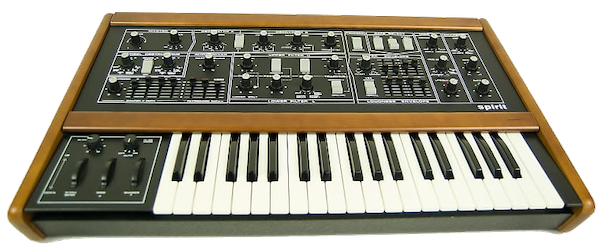
The Spirit’s synthesis architecture reads like a keyboard engineer’s fantasy come to life: two oscillators, with unusual options for uncoupling oscillator B from keyboard tracking, dual multi-mode filters with separate signal paths (including distortion and formant options), a flexible VCA, a pair(!) of complex modulation paths called Mod X and Shaper Y, and plenty more as well. It’s like Moog and company made a list of the most outrageous things they could think of just to see how far they could push it, and Crumar said yes to all of them.
However, only 100 to 300 units were ever made. Certainly the fact that it was a monosynth in 1983 had something to do with it, but Crumar was also facing an uphill battle against its reputation as makers of cheap organs and home keyboards. It would take a few more decades for the Spirit to be recognized as a maverick monosynth worth hearing.
About the author: Adam Douglas is a musician and synthesizer fan based in Tokyo, Japan. He writes about synths on his blog, Boy Meets Synth.
